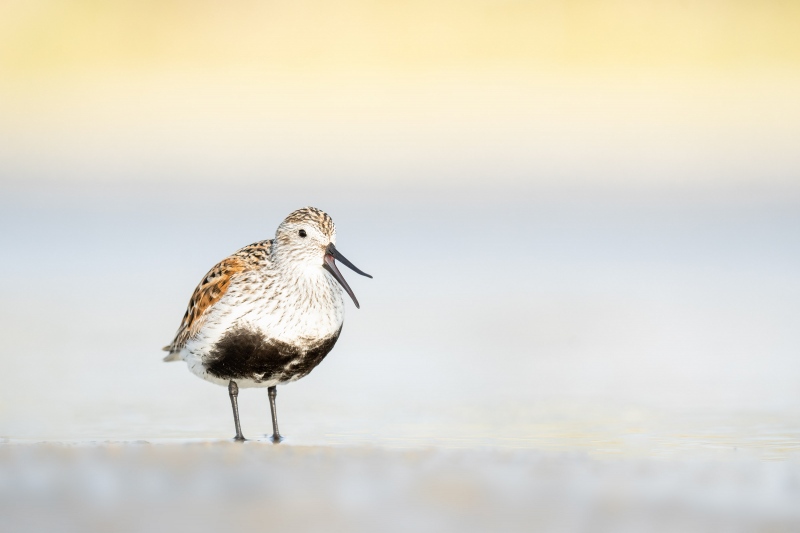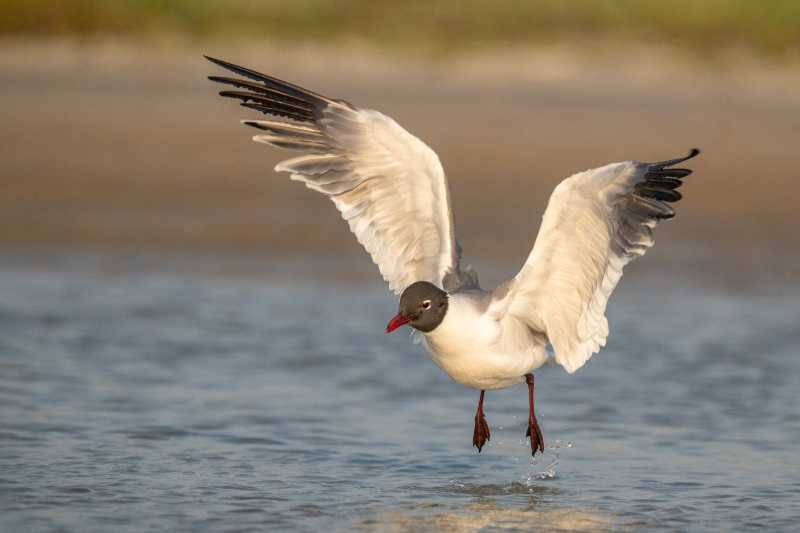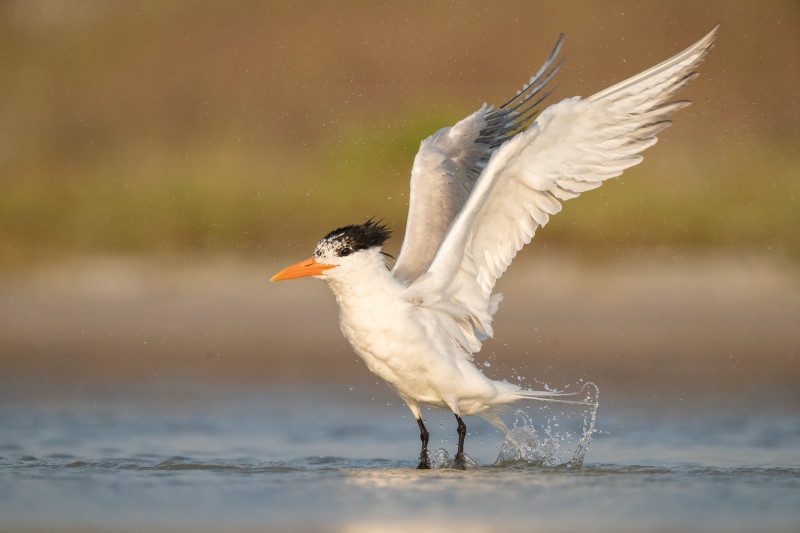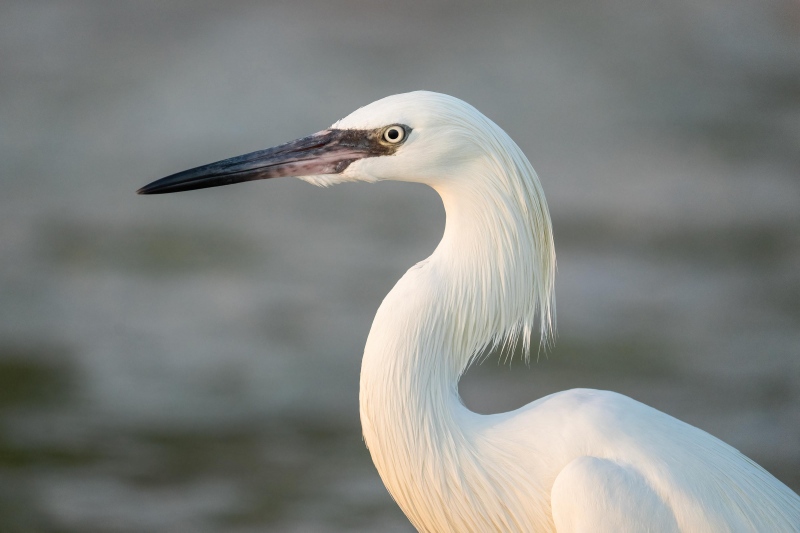My Call
In Sunday’s blog post, my clear favorite was the spoonbill/marsh grasses image; I love the soft light and am a sucker for pink and green. Not to mention the exquisite image design.
What’s Up?
In today’s post, I share with you four additional darned good images from the unexpected mega afternoon at Fort DeSoto on 11 May. As it was indeed a stellar afternoon, I could probably keep going for another two weeks If you missed the video, you can access it here.
After almost missing the Auto Train on Sunday afternoon — all lanes of the Florida Turnpike were closed near Kissimmee, I was saved by Maps as it re-routed me around the delay. I made it with seven minutes to spare! The trip was uneventful. With some “mechanical delays,” we arrived in Lorton, VA a bit more than an hour late. It took me a shade under five hours to get to my Staten Island hotel.
Today is 23 May 2023. I will be up in the dark heading to Nickerson Beach. Wherever you are and whatever you are doing, I hope that you too have a great day.
All are cordially invited to join me next year on a Homer or a San Diego Instructional Photo Tour (IPT). I will likely be offering a late-June Nickerson Beach IPT very soon, and will be announcing fall dates for two or three Fort DeSoto IPTs soon. Not too mention a Galapagos Photo-Cruise of a lifetime in August 2024.
Please remember to use the B&H and Amazon links that are found on most blog pages and to use the BIRDSASART discount code at checkout when purchasing your new gear from Bedfords to get 3% back on your credit card and enjoy free second-day air FedEx. Please, also, consider joining a BAA IPT. You will be amazed at how much you will learn!
You can find some great photo accessories (and necessities, like surf booties!) on Amazon by clicking on the Stuff tab on the orange/yellow menu bar above. On a related note, it would be extremely helpful if blog-folks who, like me, spend too much money on Amazon, would get in the habit of clicking on the Amazon logo link on the right side of each blog post when they shop online. As you might expect, doing so will not cost you a single penny, but would be appreciated tremendously by yours truly. And doing so, works seamlessly with your Amazon Prime account.
Please remember that if an item — a Delkin flash card, or a tripod head — for example, that is available from B&H and/or Bedfords, is also available in the BAA Online Store, it would be great, and greatly appreciated, if you would opt to purchase from us. We will match any price. Please remember also to use my B&H affiliate links or to earn 3% cash back at Bedfords by using the BIRDSASART discount code at checkout for your major gear purchases. Doing either often earns you free guides and/or discounts. And always earns my great appreciation.
The Fact$ of Life
Right now, the market for editorial sales of natural history images has virtually disappeared. The incomes of the world’s top stock photographers are down by at least 90%. Like me, most depend on income from photo trips, the sale of educational materials, and income from this or that affiliate program.
In 2001, BAA sold the publication rights to images for nearly one-quarter million US dollars. That amount dropped to about $20,000 by 2011, and in 2017, to slightly more than $2,000.00. We’ve stopped counting. IPTs used to fill within days. Now I am happy to go with one or two folks, but I’d much rather have you along. And so it goes. In 2009, I turned to creating educational blog posts, now to the tune of 4024. Yes, 4024 educational blog posts. So, please remember to use either my B&H or Bedfords affiliate links for your major purposes. It does not cost you one cent to do either.
B&H
Many folks have written recently stating that they purchased a Sony a1 from B&H and would like their free membership in the Sony 1 Info and Updates Group, a $150.00 value. When I check my affiliate account, their orders have not been there. When I let them know that they get credit for B&H purchases only if they use one of the many B&H affiliate links on the blog or begin their searches with this link, they are always disappointed. If in doubt, please contact me via e-mail and request a BH link. I am always glad to help and to guide you to the right gear.
B&H Simplified
To ensure that I get credit for your B&H purchases, you can always click here. The tracking is invisible but greatly appreciated. And, you can use your PayBoo card. You must use the website to order. Thanking me for the past 4000 educational blog posts could not be any easier and will not cost you one penny. Please shoot me your B&H receipt for major purchases.
Bedfords Simplified
Click here to start your search. Choose standard shipping, and when you get to the payment page, enter BIRDSASART in the discount code box and hit apply. You will be upgraded to free second day air Fed-Ex and receive 3% cash back on your credit card once your stuff ships. Either is greatly appreciated by yours truly.
Iceland
My decades-long dream of spending time on Grimsey Island, Iceland, with the puffins — 13 days in this case!, will be realized this coming July. I am doing back-to-back trips as a participant. If anyone would like information on the world’s greatest Iceland/Atlantic Puffin trip this coming July, please contact me via e-mail.
|
|
|
This image was created on 11 May 2023 on the third Fort DeSoto IPT. Seated on damp sand, I used the heel-pod technique with the handheld Sony FE 200-600mm f/5.6-6.3 G OSS lens (at 524mm) with The One, the Sony a1 Mirrorless Camera ISO 1600. Exposure determined via Zebras with ISO on the Thumb Wheel: RawDigger showed that the exposure was perfect: 1/1600 sec. at f/6.3 (wide open) in Manual mode. AWB at 6:31:30pm on a sunny afternoon. Tracking: Expand Spot/AF-C with Bird Eye/Face Detection enabled performed perfectly. Image #1: Breeding plumage Dunlin with bill open |
Stunned After the Fact
At times, when you are picking several hundred keepers from several thousand images, it is possible to gloss over a really good one. With the relatively small-in-the frame super-sharp subject and very little beach clean-up, the dreamy, out-of-focus, pastel-colored background of this one blows me away. Though I am not 100% sure of what the bird is doing (probably an odd preening pose), the open bill is a neat touch.
|
|
|
This image was also created on 11 May 2023 on the third Fort DeSoto IPT. Seated on damp sand, I used the heel-pod technique with the handheld Sony FE 200-600mm f/5.6-6.3 G OSS lens with the Sony FE 1.4x Teleconverter (at 539mm) with The One, the Sony a1 Mirrorless Camera ISO 2000. Exposure determined via Zebras with ISO on the Thumb Wheel: RawDigger showed that the raw file brightness was dead-solid perfect: 1/2500 sec. at f/9 (wide open) in Manual mode. AWB at 7:05:12pm on a sunny afternoon. Tracking: Expand Spot/AF-C with Bird Eye/Face Detection enabled performed perfectly. Image #2: Breeding plumage Lauging Gull flapping after bath |
ISO Savings versus Relatively Light Weight, Versatility, and Reach
Since I purchased the Sony 400mm f/2.8, I have rarely used the 200-600. Why? I usually use the 200-600 at the long end, and the faster 400 allows me to save seven clicks of ISO — 2 1/3 stops. When I add the 1..4X TC to the 400, I get to 560mm at f/4 — this still saves me 1 1/3 stop of ISO (four clicks) when compared to the 200-600 at f/6.3.
I grabbed the 200-600 on the afternoon of 11 May because I was being a bit lazy and not expecting anything great. Whenever I opt for the 2-6 on a sunny day, I make sure to have a 1.4X TC in my fanny pack just in case. So that is what I did.
A funny thing happened on the way to the Gulf. The huge high tide led to many great opportunities with shorebirds, bathing gulls and terns, two spoonbills, and a white morph Reddish Egret. When I added the 1.4X, I needed to use relatively high ISOs in the range of from 1600 to 2500. In the shade of Hidden Lagoon near the end of the day, I got up to ISO 4000. None of the images made at these higher ISOs suffered badly (if at all).
I enjoyed the relatively light weight and portability of the 2-6. The reach with the TC gave me up to 840mm when needed, and the versatility is pretty much unmatched by other telephoto zooms. In short, the 200-600 was perfect for what turned out to be a great afternoon.
|
|
|
This image was also created on 11 May 2023 on the third Fort DeSoto IPT. Seated on damp sand, I used the heel-pod technique with the handheld Sony FE 200-600mm f/5.6-6.3 G OSS lens with the Sony FE 1.4x Teleconverter (at 766mm) with The One, the Sony a1 Mirrorless Camera ISO 2500. Exposure determined via Zebras with ISO on the Thumb Wheel: RawDigger showed that the raw file brightness was dead-solid perfect: 1/2500 sec. at f/ (wide open) in Manual mode. AWB at 7:07:07 PMpm on a sunny afternoon. Tracking: Expand Spot/AF-C with Bird Eye/Face Detection enabled performed perfectly. Image #3: Royal Tern flapping after bath |
Zoom Out for the Flapping-After-Bath Images
When you see a bird dipping its breast in the water, it will rise up and flap 99% of the time. For the best water spray images, you want to be close with a long focal length to get as tight as possible. For the flapping-after-bath images, you want to do your best to avoid clipping wings. With a long fixed focal length lens like one of the 600mm f4/s or one of the 400mm f/2.8s, you would have to either remove the teleconverter or move well back for perfect framing. Of course, neither of those options is in any way practical.
With a zoom lens, however, you simply zoom out. I was very greedy with Image #3 having zoomed out from 840mm only to 766mm. Though I clipped the wings in many frames, this one turned out to be very special with the perfect framing, the water droplets, and the sweet background.
|
|
|
This image was also created on 11 May 2023 on the third Fort DeSoto IPT. Standing at full height, I used the handheld Sony FE 200-600mm f/5.6-6.3 G OSS lens (at 600mm) with The One, the Sony a1 Mirrorless Camera ISO 4000. Exposure determined via Zebras with ISO on the Thumb Wheel: RawDigger showed that the exposure was perfect: 1/2000 sec. at f/6.3 (wide open) in Manual mode. AWB at 7:35:27pm in the shade of Hidden Lagoon late on what had been a sunny afternoon. Tracking: Zone/AF-C with Bird Eye/Face Detection enabled performed perfectly. Image #4: White morph Reddish Egret |
200-600 Close Focus
With a minimum focusing distance (MFD) of less than eight feet at 600mm, 7.87″ to be exact, the Sony 2-6 is deadly for close work. It compares quite favorably with the 14.8′ MFD of the Sony 600mm f/4 GM lens. And it is a lot easier for me to handhold than the 600 f/4.
When this white morph Reddish Egret walked right by me, I was good to go.
Your Call?
Which of today’s four featured images do you like best? Why?
I have two favorites that I will share with you on Thursday.
Typos
With all blog posts, feel free to e-mail or to leave a comment regarding any typos or errors.


















Hi Artie, and folks. I love them all because I was there and cherish the moments. A perfect segue into the following review of my time on this IPT. Artie please feel free to quote me for testimonial purposes:
Here’s cliche number one: I don’t write reviews
Cliche number two: I’m making an exception in this one case
I am writing this a week after my first IPT because I needed to let it all sink in properly – I needed to decompress. I’m probably not fully there yet, even now, but it’s time.
My biggest take-away is that Artie’s masterpieces are well-earned. There was never a time when I saw someone work harder than he did. It was inspirational, humbling, and fascinating to watch him. Once he was in his element, the magic started immediately, and his passion was apparent for the duration of each session. My next takeaway is how unbelievably gracious, honest, and generous he is. Anyone who follows his blog already knows this (and if you don’t, you should), but Artie is an educator to his core. He is quick to explain his thought processes at any time, and leads by example.
After each session, we had a nice meal and discussed what made good photos good and bad photos bad. Enlightening. And sometimes sad. But so much better for it all. These days, more than any other time, it is the extra effort that separates the pros from the amateurs – getting low in the muck, as needed – knowing when to move, and when to stay, and doing it unwaveringly. I created so many images that I’m proud of. Artie has a great way of teaching without belittling, which keeps your mind open to his many valuable lessons.
Artie, you are a national treasure, a never-ending source of inspiration, and a perfect mentor. I wish I could shoot right next to you every weekend
I hope to see you again soon; your friend,
Stu Goz
Image #1 and #2 and #3 and #4 are interesting and well made. And image #3 Royal Tern flapping after bath must be singing “splish splash I was taking a bath”! Ha Ha!
Love #1 with ground level image and open bill as if he is talking to you.
I like these set much better that the set in the previous blog post.
Thanks, Moe. The first four were not exactly chopped liver. And I will still go with the spoonbill as the very best of a great afternoon.
with love, a
1 and 3 for me with an edge to 1. Love the simplicity of the design, the open bill and the patented DeSoto background.
#3, everything is perfect! Lights camera and action
The water coming off it’s tail, head position and sweet light.